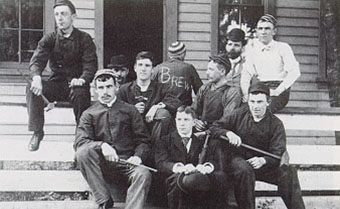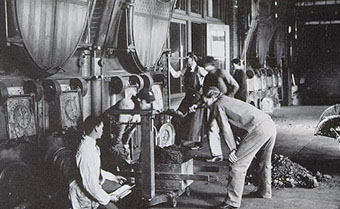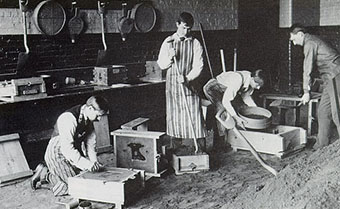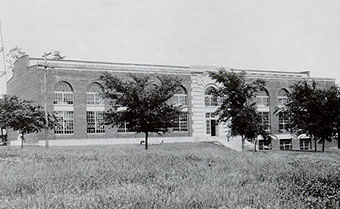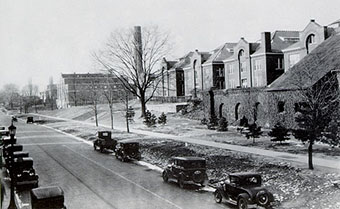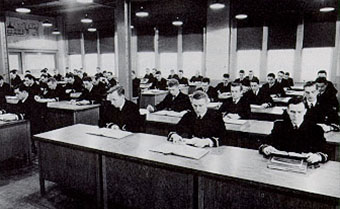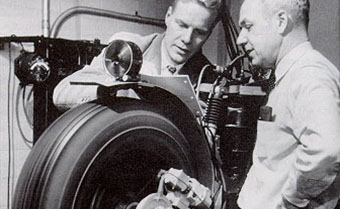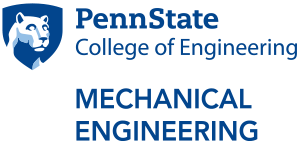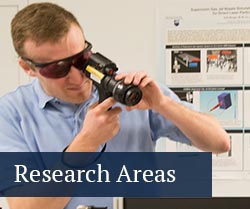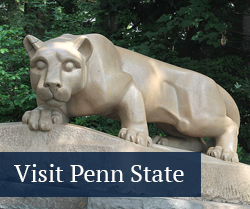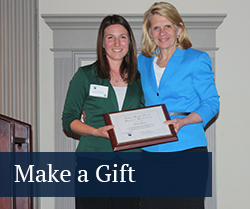
History of Mechanical Engineering at Penn State
A Fledgling Program
In 1881, the Pennsylvania State College Board of Trustees approved a baccalaureate program in civil engineering and a two-year course in mechanic arts, the precursor to today’s mechanical engineering program. When George Washington Atherton became president in 1882, he expanded mechanic arts to a three-year program and appointed faculty member Louis Ehrheart Reber to convert it to a baccalaureate degree program in mechanical engineering.
A new Mechanic Arts Building was dedicated in 1886 and the Board of Trustees approved a mechanical engineering baccalaureate curriculum for the school year 1886-87. The mechanical engineering curriculum was oriented toward students interested in the theoretical aspects of mechanisms and power systems. That year, 18 of the 92 students at the Pennsylvania State College were enrolled in mechanical engineering. Three students made up the first graduating class in 1889.
The Department of Mechanical Engineering introduced a new degree program, milling engineering, in 1912 to train flourmill engineers. The department constructed a temporary mill in one of the new engineering annexes and, within a few years, obtained a grant from the U.S. Department of Agriculture to devise methods to prevent dust explosions in flourmills. This grant was the first research grant received by the School of Engineering.
The program grew steadily and in 1915, mechanical engineering at Penn State had 174 students. Engineering classes were conducted in the Main Engineering Building, Engineering Units, and a few smaller buildings including the campus power plant, the college's sewage treatment facility, and the thermal laboratories.
A Fire and the War Years
On November 25, 1918, the department experienced a huge setback when the Main Engineering Building burned down. In order for classes to continue, the department used space in the Mining Building and Engineering Unit F. In addition, the Pennsylvania Railroad provided space at its test facilities in Altoona in partial support of the railroad studies. In 1921, a new laboratory building was constructed for the department along Burrowes Road, but relief from the shortage of space didn’t come until 1927 when the Board of Trustees approved the construction of a new engineering building.
Mechanical engineering flourished through the 1930s. In 1931, the department had 20 faculty members, 32 graduating seniors, and 47 juniors. In early 1941, the department implemented a new sixteen-week course in diesel engineering, requested by the Department of the Navy and the first of its kind under the navy's new preparedness program.
The draft and enlistments reduced the male population at Penn State, and by fall 1943, Penn State enrollment consisted of 1,764 women and 1,150 men. That year, the School of Engineering awarded its first master's degree to a woman in mechanical engineering. About 10 years later, Nancy Boodley became the first woman faculty member in the department when she was appointed instructor of engineering drawing in 1954.
Shifting Focus
Hammond Building was dedicated in the 1960s. The 60s was also when the department took steps to improve its graduate and research programs in part by increasing the number of faculty members with doctoral degrees. The number of faculty with doctoral degrees rose from three in 1962 to twenty in 1968. During this time, faculty were encouraged to obtain research grants and to publish in scholarly journals, and faculty began eleven sponsored research projects with a total value of $200,000 between 1962-1963.
Major new areas of research were high-speed rail transportation, fluid power and control systems, fluid jet amplifiers, air pollution control, combustion reaction kinetics, droplet ignition in zero-gravity field, thermal boundary layer removal by suction, and transient response of heat exchangers. In spring 1963, the department awarded 12 master's, 2 doctoral and 91 bachelor’s degrees. Just a few years later, in 1965, the department awarded 156 bachelor’s, 23 master's, and 3 doctoral degrees — the largest number of advanced degrees ever awarded by the department and the largest number of baccalaureate degrees awarded since World War II.
In 1970, the mechanical engineering department received "top rating" in the Roose-Anderson report on graduate programs, published in 1971 by the American Council on Education. Also, during this time, the application of the digital computer to problems in mechanical engineering advanced rapidly. In the thermal sciences, the field of computational fluid dynamics became a recognized field of research. Other ongoing research in the 70s and 80s included automotive highway safety, droplet combustion, air pollution control, noise control, underwater propulsion systems, and the design of an artificial heart in collaboration with faculty at the Hershey Medical Center. Penn State's mock circulation system has become the standard used by the National Institutes of Health. In 1985, the "Penn State Heart" was implanted in a human for the first time.
The Merger
By 1984 the department had 649 undergraduate students and 140 graduate students supported by 30 faculty and 21 staff members. The faculty had 66 active research projects with total research expenditures of $2,880,000.
In January 1997, Engineering Dean David N. Wormley announced plans to merge the Departments of Mechanical Engineering and Nuclear Engineering. The goal of the administrative consolidation was to allow for the continued existence of the nuclear engineering program in light of declining enrollments. The new department was named the Department of Mechanical and Nuclear Engineering.
The Separation
Effective July 1, 2019, the Department of Mechanical and Nuclear Engineering became two independent departments: the Department of Mechanical Engineering and the Ken and Mary Alice Lindquist Department of Nuclear Engineering.
Justin Schwartz, Penn State provost, said separating the programs will allow each to grow, as well as focus on their individual strengths. “Penn State’s mechanical engineering program has had a very long and successful history. It’s one the country’s largest programs and is highly respected in national rankings," Schwartz said. “Allowing these two proud and storied programs to become independent departments will give each the opportunity to chart its own course and flourish.”
